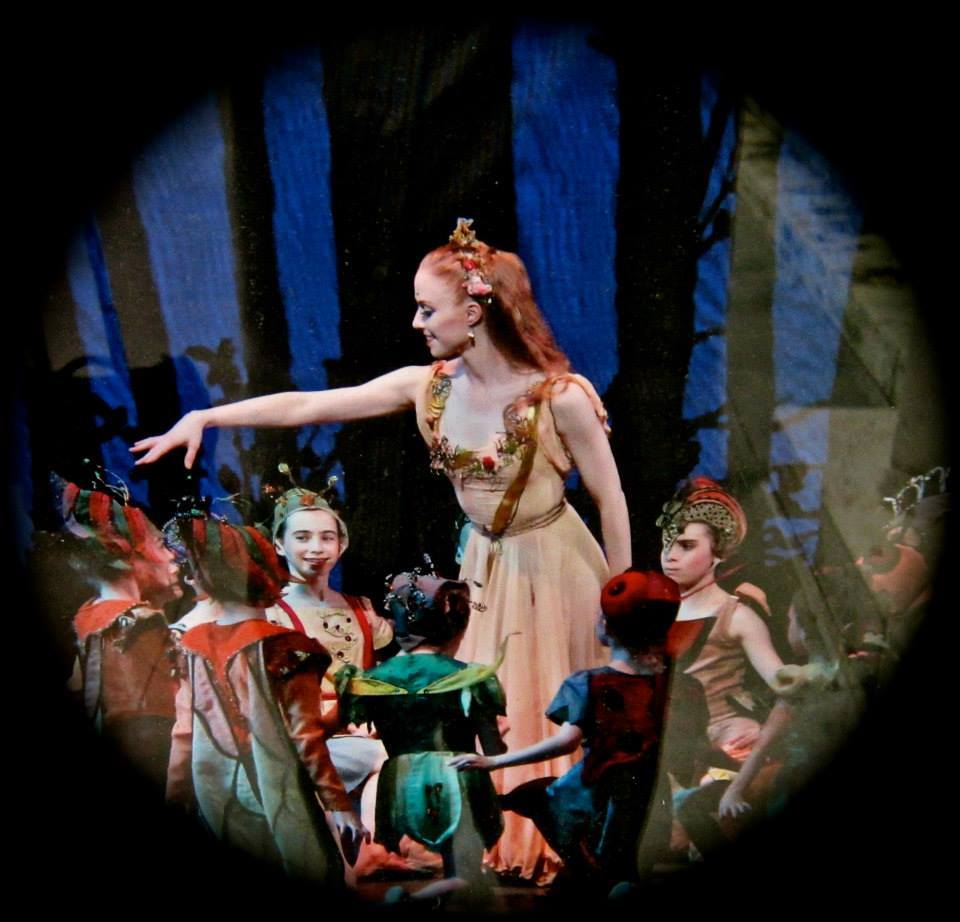George Balanchine’s balletic rendering of A MIDSUMMER NIGHT’S DREAM (1962), in revival at the New York City Ballet, captures less the Shakespeare of the popular theater, and the modern nostalgia for it, than the Shakespeare of the court, the one associated with Blackfriars, Ben Jonson, and the masques of Inigo Jones. There is a great emphasis, Nutcracker-style, on the internal entertainments of the play performed at the Athenian wedding of Theseus and Hippolyta. There is not, in Balanchine’s version, even the farcical tragedy of the Mechanicals, although Bottom-in-ass’s-head is brilliantly choreographed: a theatrical producer of the play would do well to pay attention to the movement vocabulary of the ballet.
The high point was, for me, either the wonderful body language of Taylor Stanley as Bottom, or the pas de deux of the completely non-Shakespearean divertissement in Act II, which was so brilliantly done by Tiler Peck and Tyler Angle as to bring a collective heart stop to the packed house. It was in that segment that the ballet slipped the bounds of story and veered into the poetic abstraction of which Balanchine was the greatest of masters. Which is not to say that the story elements of Shakespeare’s play aren’t prettily presented, or without choreographic brilliance. Butterflies flutter in Balanchine’s telling of the tale, and woodland creatures scurry (again Nutcracker-like); I doubt there is anyone in all choreography who exceeds his extension of the dance to the joints and tips of the fingers.
Mendelssohn’s music, augmented by additional selections from the composer, is stirringly conducted by Daniel Capps. This most famous of all pieces of incidental music lacks an Elizabethan sensibility, and is less evocative of the underlying drama than, for example, is Grieg of Ibsen in the Peer Gynt suites, but is still a vital part of the play’s history. In some ways Balanchine has realized the music more than he has the drama it was meant to accompany, but there is at least one aspect of the original that, in his version, stands out – the lovely changeling boy whose custody is disputed by Titania and Oberon, the fairy queen and king. The boy observes much of the action (Clara-in-Nutcracker-like) and is a persistent object of adoration. My eyebrow has never been so raised as to just what the changeling’s presence in Shakespeare’s play is really about.
That is, to say the least, of great interest, as is the superb dancing overall, but what seizes the memory in the end is that moment in Peck and Angle’s duet when Peck goes suddenly sideways, and time and space are, as they are normally perceived, abruptly reordered. The axis of the dance tilts against the axis of the earth and holds its own.
A MIDSUMMER NIGHT’S DREAM returns May 23-28 in 2016. For tickets and information, click here.
